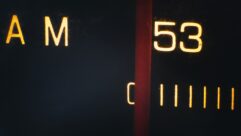Michael, I just saw your article posted on radioworld.com about your trip to the conventions this year. It brought back a bunch of memories.
I was Engineer in Charge for ABC Radio News’ coverage of every convention going back to the GOP convention in Houston in 1992. In ’96, ’00 and ’04 I was lucky enough to be the lead on a team of three engineers.
But then in ’00 and ’04 we had to set up a facility that included two Dalet workstations and a server in a trailer, a Dalet play-to-air workstation and an air console in the same trailer; essentially a mini-radio news bureau. We also had a Dalet workstation (still on the same server network) in our broadcast booth in the arena, three hardwired floor positions for reporters to go live from and two RF setups for live roving reports from the floor. Each live position could be mixed on the air mixer in the trailer for long-form programming or fed on a T-1 Intraplex channel back to New York for newscast drop-ins.
Of course, each position had routable IFB and/or intercom. I shouldn’t forget to mention the 10 positions on Radio Row for affiliates and O&Os, each with a mixer, three mics, three headphones, an ISDN codec and Internet.
We always traveled the Monday the week before the convention and usually had everything 95 percent set up by Thursday. The rest of the time was spent waiting for tables, cables and contractors. You’re right about the telco service though. It is top-notch, but then you should see the planning that goes on.
I didn’t miss doing conventions this time around, with the three-day interval between the Dems and the GOP. Past conventions were separated by at least two weeks, although in 2000 I had to go from the GOP in Philadelphia to the Democrats in Los Angeles to the Olympics in Sydney without a break. When I finally got home, my youngest son said: “Who are you?”
One funny incident happened at the Houston convention in ’92. I was at our workspace doing a facilities check, listening to one of our RF setups. We had an intern walking around the Astrodome floor talking on the wireless mic and listening to IFB on headsets. All of a sudden the signal went down the drain.
I could still hear our intern but she was buried in white noise. My first thought was: “Oh great! We’re losing the wireless!” It ran on NiCads, which I knew had been sitting in the charger overnight. It sounded exactly as though the RF power dropped to where it was just strong enough to break squelch but too weak to achieve any kind of quieting. From her description of where she was standing, it couldn’t or shouldn’t be obstruction interference. I went to where the receiver was located in a locker room that had been designated as the “RF Shop” and saw we had good signal strength and modulation level.
Puzzling. So much for my theory. I decided to go out into the arena and see exactly what was happening. As soon as I opened the door and went out, I had my answer and started laughing: Hundreds of volunteers with scores of compressed air cylinders were filling red, white and blue party balloons for the big balloon drop at the end of the convention, and in doing so they were filling the Astrodome with white noise. Alas for my diagnostic skills, but in this case, I was quite happy to be wrong.
I’m looking forward to the next edition of RW Engineering Extra.
Steve Densmore
Broadcast Technology Manager
iBiquity Digital Corp.
Columbia, Md.












